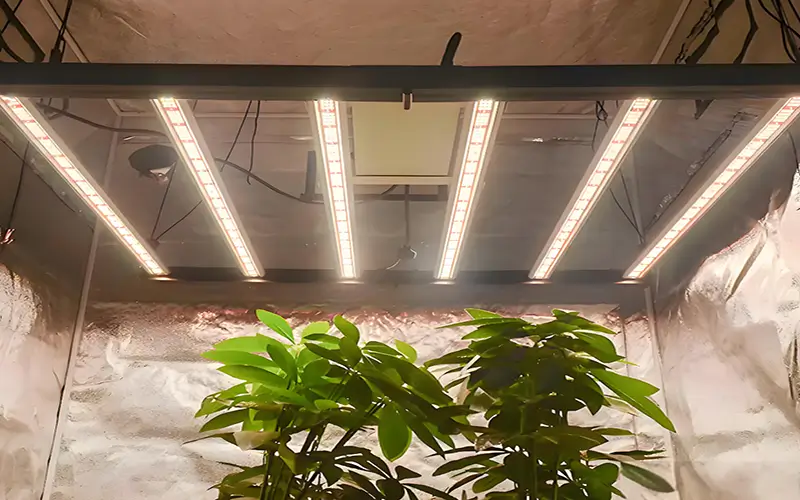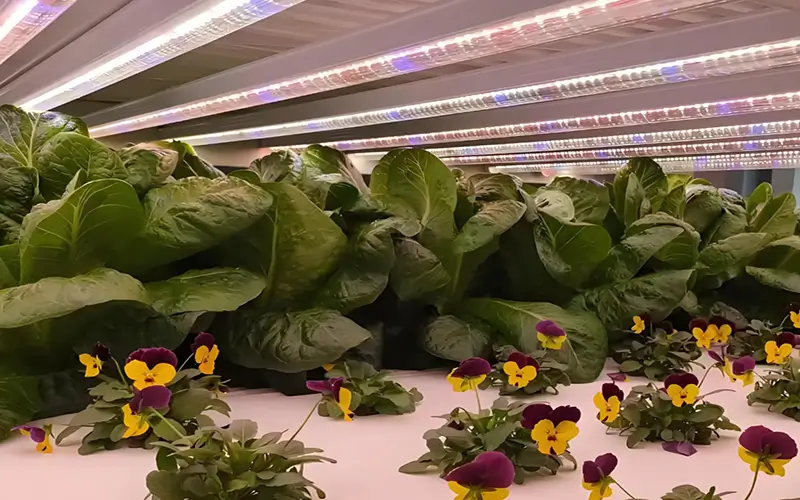
“Full spectrum light” is a trendy lighting concept, and the term is widely used. However, most people have only heard of it and are not very clear about the specific definition. The general lack of a generally accepted definition leads to confusion in its application.
Distinguishing what is “full spectrum” and what is not “full spectrum” can be vague. This ambiguity complicates consumers’ evaluation and comparison of full spectrum bulbs. Generally speaking, full spectrum lighting is characterized by a color temperature range of 5000K to 6500K and a color rendering index (CRI) of more than 96. Let’s fully introduce full spectrum lighting and take a deep look at its related advantages.
What is Full Spectrum Light?
Full spectrum light refers to light that contains all wavelengths from ultraviolet to infrared, similar to natural sunlight. In lighting, full spectrum lighting refers to lighting that covers the entire electromagnetic spectrum, very similar to natural sunlight. Full-spectrum lighting attempts to replicate natural lighting by covering all wavelengths visible to the human eye, including small amounts of ultraviolet (UV) and infrared (IR). This comprehensive coverage is thought to provide a range of benefits, especially in environments with limited natural light.
Full-spectrum lighting fixtures are not only functionally close to sunlight but are also thought to help reduce eye fatigue, improve mood and increase productivity. In lighting technology, full-spectrum lamps are widely used in scenes such as photography, plant growth, medical and health care, because they simulate the natural light effect under sunlight and can provide high color rendering index (CRI, Color Rendering Index), which has a positive impact on visual comfort and physiological health.
Full Spectrum Light Features Include:
- High color rendering: Full-spectrum light sources can present the color of objects more realistically, usually with a color rendering index (CRI) close to 100.
- Natural lighting simulation: Full-spectrum lighting is close to natural lighting, so it is generally 5000K-6000K. It can help regulate the human body’s circadian rhythm, promote mental health and improve concentration.
Advantages of Full-Spectrum Light
There are still many advantages to full-spectrum light, even though it is still a vague concept most of the time. But it is still one of the best-selling lighting.

Improve Mood
It is well known that exposure to natural sunlight can regulate our circadian rhythm. However, most young people now go to work on time every day. They don’t see the sun in the morning and evening and lack natural light exposure for a long time. At this time, full-spectrum lighting is needed, which may help regulate this rhythm indoors, thereby potentially improving mood.
Seasonal Affective Disorder (SAD):
SAD is a seasonal depression that often occurs during the winter months when there is less sunlight, so it’s important to get outside and get some sun. Light therapy using a full-spectrum lighting box is a common treatment option for SAD and can relieve symptoms like fatigue and low mood.
Plant Growth
Full-spectrum lighting is essential for healthy plant growth. Many greenhouse plants and vegetables use full-spectrum lighting. It provides the necessary wavelengths for photosynthesis, the process by which plants convert light into energy.
The above three points are the specific benefits of full-spectrum light. You can choose the full-spectrum lighting correctly according to your needs.
How is the Full Spectrum Defined?
For artificial lighting, there is currently no universally accepted definition of “full spectrum”. In the field of lighting LED strips, there are also concepts and products of full spectrum LED strips. Unlike natural sunlight, which has a well-defined spectrum, the spectral output of artificial light varies greatly.
Generally speaking, it refers to light sources that emit light across the entire visible spectrum, which is very similar to natural daylight. Ideally, the spectrum should include wavelengths from about 380 nanometers (nm) to 780 nm. This wide emission range distinguishes full spectrum light from lighting sources that are limited to specific colors or narrow wavelength bands.

How Do I Know If a Light Source is Full-Spectrum?
Full spectrum lighting is not visible to the naked eye or tested by a typical machine. Determining if a lighting source is full spectrum requires checking its spectral output. This can be determined by spectral analysis or by referring to the product specifications provided by the manufacturer.
Key indicators include the light source’s color temperature, measured in Kelvin (K), and the color rendering index (CRI), which indicates how accurately the light source renders colors compared to natural daylight. A high CRI (usually above 90) and a color temperature of around 5000K-6000K are typical of full spectrum lighting. When you wanna choose 4000K or 5000K, pls read Comprehensive Comparison of 4000K vs. 5000K in Lighting
Are Fluorescent Lights the Same As Full-spectrum Lights?
This is a good question, but regular fluorescent lights do not generally emit full-spectrum light. The light they emit has specific wavelengths, so they have a limited spectral output compared to sunlight. It may not cover the entire visible spectrum or replicate the qualities of natural daylight.
However, some fluorescent lamp designs do simulate natural sunlight, sometimes called “full-spectrum” fluorescent lamps. This provides better color rendering and wider spectral coverage.
Conclusion
Full spectrum light does have a lot to offer, especially in environments where natural lighting is scarce or unavailable. This includes improving mood, and enhancing vision, and color perception. Understanding full spectrum light, its uses in various applications, and how it differs from other types of lighting is essential to choosing the right lighting solution for specific needs.
FAQs
Yes, full-spectrum lighting is good for plant growth because it provides the full range of wavelengths needed for photosynthesis. It can be used to supplement natural sunlight or as the primary light source for an indoor gardening setup.
When choosing a full-spectrum lighting bulb, consider its color temperature (daylight lighting is about 5000K to 6500K), a high color rendering index (CRI) above 90 for accurate color reproduction.
Not all LEDs are full-spectrum. While some LEDs can emit a wider range of wavelengths, others focus on specific colors for increased efficiency. Look for manufacturers that specifically label their LEDs as full-spectrum.
Some full-spectrum lights may emit small amounts of UV lighting, but these are typically UV-A rays, which are less harmful than the UV-B rays in sunlight.
